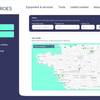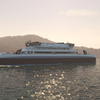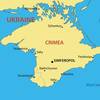With the country in its second month of action after the terrorist attacks on the World Trade Center and Pentagon, the Coast Guard has implemented an unprecedented number of maritime safety and security measures.
“We continue to be at a heightened state of alert and awareness,” said Lt. Cmdr. Brendan McPherson, a spokesman with the Coast Guard’s Atlantic Area headquarters here.
Among the most recent safeguards put in place to maintain port safety and security in more than 360 ports, along 95,000 miles of U.S. shoreline include:
· 94 security zones, an all-time high, have been established nationwide.
· Beginning today, most commercial vessels bound for U.S. ports will be required to provide 96-hour advance notice of arrival information to the Coast Guard’s new National Vessel Movement Center. Reporting to the center will streamline the notification process while the longer advance notice will allow the Coast Guard and other U.S. law enforcement agencies more time to review the information.
· Armed Coast Guard boardings of commercial vessels, at the discretion of the local Captains of the Port.
· The escort of cruise ships and certain U.S. naval ships in and out of a number of U.S. ports.
· Joint interagency boardings and maritime security operations with local, state and federal law enforcement agencies.
In the past 24 hours, the Coast Guard has conducted more than 340 maritime security patrols, conducted 52 vessel escorts and completed 30 air surveillance patrols within the Atlantic Area, an area covering 40 states east of the Rockies. Other regulations and security measures implemented since the Sept. 11 attacks include:
· Naval Vessel Protection Zones that provide a 500-yard security zone around U.S. naval vessels.
· Authority to control the anchorage and movement of any vessel in U.S. waters.
· Recalled more than 2,700 Reservists to active duty, and approximately 28,000 Coast Guard Auxiliarists (volunteers) are helping out in non-law enforcement roles, thereby freeing up Coast Guard personnel for those duties.
With these and other tools in place, local Coast Guard Captains of the Port have been able to re-assess and revise contingency plans, adjust resources and implement strategies to sustain long-term maritime safety and security operations, creating a layered maritime defense in our nation’s ports and waterways.
The regulations and safeguards now in place enable the Coast Guard to sustain a heightened level of security and free up resources needed to plan for other critical Coast Guard missions, such as counter-narcotics and illegal migrant interdiction patrols in the southeast U.S. and the Caribbean.
Subscribe for
Maritime Reporter E-News
Maritime Reporter E-News is the maritime industry's largest circulation and most authoritative ENews Service, delivered to your Email five times per week










